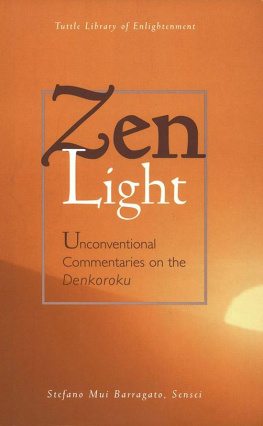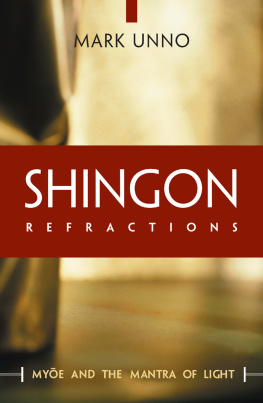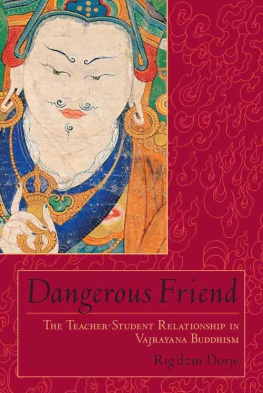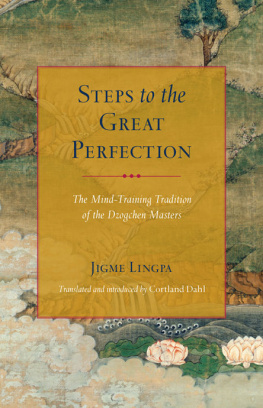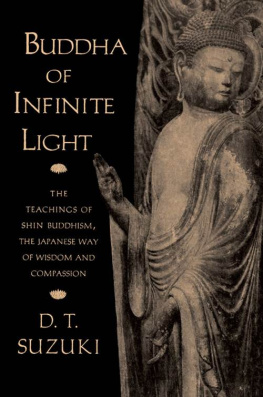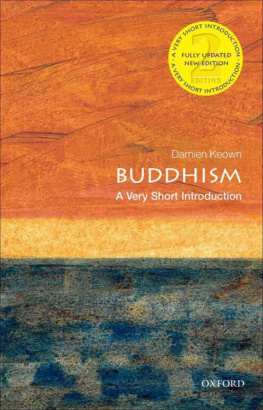

First published in 1997 by Tuttle Publishing, an imprint of Periplus Editions (HK) Ltd., with editorial offices at 364 Innovation Drive, North Clarendon, VT 05759 U.S.A.
Copyright 1997 Stefano Barragato
All rights reserved. No part of this publication may be reproduced or utilized in any form or by any means, electronic or mechanical, including photocopying, recording, or by any information storage and retrieval system, without prior written permission from Tuttle Publishing.
The use of the koans as well as text on pages 155 and 174 is reproduced from The Record of Transmitting the Light: Zen Master Keizan's Denkoroku. Translated by Francis H. Cook, 1991, Zen Center of Los Angeles. Reproduced by permission of the Zen Center of Los Angeles. All rights reserved.
Library of Congress Cataloging-in-Publication Data
Barragato, Stefano, 1930-
Zen light: unconventional commentaries on the Denkoroku / Stefano Barragato. 1st ed.
p. cm.
ISBN 978-1-4629-0149-4
1. Keizan, 1268-1325. Denkoroku. 2. Sotoshu. 3. Priests, Zen--
Biography. I. Keizan, 1268-1325. Denkoroku. II. Title.
BQ9449.S544D463 1997
294.3'927dc21
97-5244
CIP
Distributed by |
Charles E. Tuttle Co., Inc. RR1 Box 231-5 North Clarendon, VT 05759 tel: (800) 526-2778 fax: (800) FAX-TUTL | Tuttle Publishing Japan Yaekari Building 3rd Floor, 5-4-12 Osaki Shinagawa-ku, Tokyo 141-0032 Tel: 81 (03) 5437 0171 Fax 81 (03) 5437 0755 |
Berkeley Books Pte. Ltd. 61 Tai Seng Avenue, #02-12 Singapore 534167 Tel: (65) 6280 1330 fax: (65) 280-6290 |
First Edition 1 3 5 7 9 10 8 6 4 2 05 04 03 02 01 00 99 98 97 Cover design by Jill Winitzer Design by Fran Kay Printed in the United States of America |
... coming from the heart, may it again reach the heart.
Ludwig van Beethoven
T o Margaret, my wife, friend, companion, goad, and fellow recluse.
T o students of the White Cliff and Dragon Gate Sanghas, who have helped me with this book by listening to me read it to them in place of Dharma talks, and by their always wonderful comments.
T o Roshi.
Contents
Introduction Zen Light is a study of the Denkoroku, the record of Transmitting the Light, translated by Francis H. Cook. The author of the Denkoroku is Zen monk Keizan Jokin (1268-1325) who was of the school of Dogen Zenji and was his third successor. As recounted by Keizan, the Denkoroku is a collection of transmissions of the fifty-three ancestors. In many ways, Keizan is responsible for the state and structure of the Soto School of Zen as we know it today, for he did much to popularize Zen and make it available to a vast lay public in ways Dogen probably would not have approved of. Keizan did an amazing thing in the Denkoroku, he focused on the experience of enlightenment that led to transmission. The scenario and action of each koan have something like the following format:
1. The master asks the disciple a question. It is not an ordinary question. It is a koan, or a riddle, or a deep penetrating query that hints at the Absolute. Often the question or koan contains the answer, but it is hidden. 2. The disciple expresses his understanding. It is the job of the disciple to penetrate the koan and delve into the Absolute. 3. Sometimes it is necessary for the master to repeat the question or ask it in a different way. The master prods the disciple into the Absolute. 4. The disciple gives his answer. 5. The master confirms the disciple's understanding and "transmits" the Dharma, making the disciple his successor and the next ancestor.
This is generally how koan study works. The Denkoroku is not ordinary koan study between a Zen master and one of his students. There are two major persons in each chapter of the Denkoroku . First is the current ancestor. Second is the disciple and successor of that ancestor. The ancestor is the one who represents and "holds" or "contains" the entirety of the Dharma. The disciple is the one the ancestor "sees" as his successor. The lineage begins with Shakyamuni himself, who selects Mahakashyapa as his successor. Mahakashyapa thus becomes the first ancestor of the lineage. Mahakashyapa then selects Ananda, and so forth through fifty-three generations to Koun Ejo. These are the Zen masters who embody and preserve the Dharma of the Buddha and completely transmit the Dharma to their successors. At the end of this book I list the lineage in some detail, giving alternative names by which the ancestors are known. There is also a discussion of the meaning of the lineage. In our Soto Zen tradition, the lineage continues from Koun Ejo down to Maezumi Roshi and his successor, my teacher, Bernard Tetsugen Glassman, Roshi. The lineage is similar to the apostolic succession of the Christian religion. However, there is a difference. The Zen lineage does not only include popes or Zen masters. In the Zen tradition, each person who receives the precepts, or Jukai, becomes part of the lineage. Part of the Jukai ceremony includes making a personal copy of the lineage chart (or Bloodline chart) beginning with Shakyamuni Buddha down to the present. In my case, for instance, one of the contemporary teachers listed is Maezumi Roshi, who was the teacher of Tetsugen Roshi. After Maezumi Roshi's name, there is Tetsugen Roshi's name and then he, as part of the transmission ceremony of Jukai enters my name in the next line of the lineage chart. Subsequently, I add the name of any student who will take the precepts, or Jukai, with me. Thus, the lineage extends to every individual who makes a public declaration of his or her commitment to follow the Way. My study of the Denkoroku with my teacher, Glassman Roshi, took place over a period of about two years. I would work on each "case" and when ready, present my understanding to Roshi. The major question that struck me as I studied each case was: "What is transmitted?" The title of the book told me: "Light." The Transmission of the Light. "Light" is a central metaphor in the Denkoroku . Keizan uses the term "Light" in much the same way Christians use the words Inner Light or Holy Spirit. Other terms or metaphors for Light are Buddha-nature, or The Unborn, the major metaphor of Bankei, a Zen master of the eighteenth century. As I was reading and studying the Denkoroku, at times I felt I was reading the words of St. John the Apostle, the writer of the Fourth Gospel and the Apocalypse, and sometimes I felt I was reading St. Paul. I believe the major teachings of Zen and Buddhism are present in the Denkoroku. As I went deeper with each case, the teachings of the Denkoroku had a cumulative, powerful impact on me. When I worked on the first case, Shakyamuni Buddha, the similarity between the case and a phrase of Meister Eckhart struck me: "The eye through which I see God is the same eye through which God sees me." I wrote a poem using these words. In presenting my understanding of the first case to Roshi, I also presented my poem. Roshi then asked me to write a poem for each case and make the poem part of my presentation. After completing my study of the entire Denkoroku, Roshi asked me to write down my poems and my understanding. This book contains my thoughts on each of the koans of the Denkoroku as well as poems. I should warn the reader that my thoughts do not necessarily reflect the understanding I presented and that which was approved by Roshi. Rather, what you have in this book is commentary on the teachings found in each of the enlightenment experiences of the ancestors. This is done for a very important reason. I believe koan study is a very personal thing, and I do not hold with the view that there is a specific answer for each of the various koans. I do not believe that there is a set answer for the koan Mu, or for Hakuin Zenji's great koan, "What is the sound of one hand?" I think each of us, as we sit and meditate and wrestle with these koans, will find a place of Mu within our beings. We will find the solitary hand that makes the sound within our being, and expresses the essence of our being. Put another way, I see koans as archetypes of experiences, common to all sentient beings, which are held deep in the collective unconscious, or alaya vijana, as the old Buddhists would say. Zazen provides a pipeline which connects the inner self of each person into this vast reservoir of experience. In this way, we can connect with that which a koan presents. But the connection is our connection. The words are our words, our experiences. This is the way of koan study for me. So please don't look for answers in this book, but rather for thoughts about the major teachings of Zen. It is also my concern that these teachings be presented in non-technical, non-Buddhist, and non-Zen jargon so that they may be accessible and available for anyone who reads this book. This book is for the beginning as well as the advanced student of Zen. I also think the book may speak to the person who may never have opened a Buddhist book before, who may never have done zazen, or any type of meditationa person with no experience in Zen Buddhism. So don't worry if you are one of these people. I trust that what is in these pages, hopefully will reach you, and may possibly have meaning for you. Thank you, and may your life go well.
Next page
